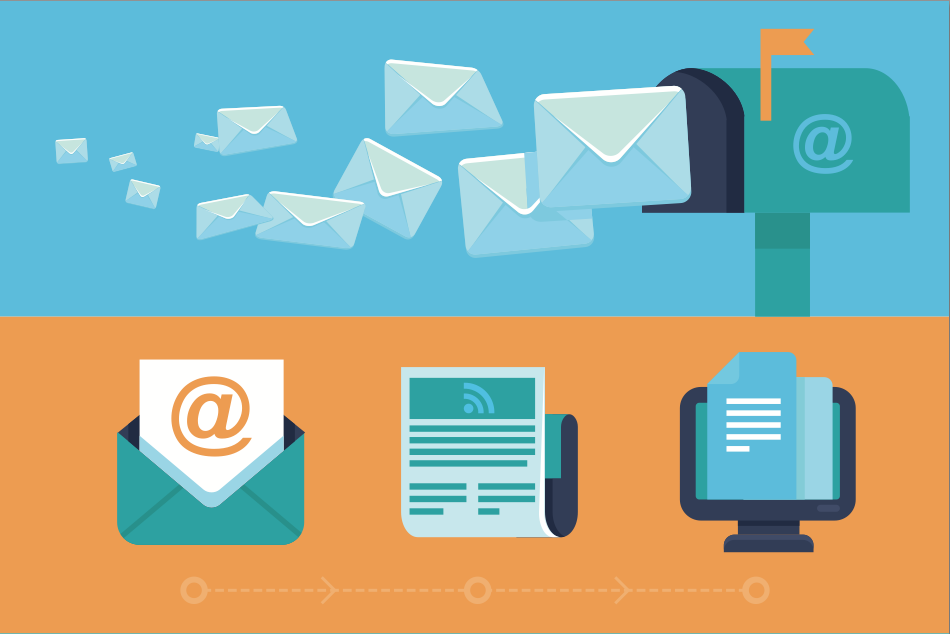An email list is the most powerful way to generate leads, convert sales and connect with people online. Not only does an email list give you a direct line into someone’s daily life, it is also proven to have the highest return on investment (ROI) compared to other online marketing channels. Facebook’s organic reach has decreased to 6 percent of a fan base as of 2014, and even fewer people are seeing tweets on Twitter. With an average open rate of 21.73 percent, it is agreed by marketing professionals that email is the most effective way to reach an audience.
Many businesses fail to recognize the importance of growing, nurturing and getting the most out of a lucrative email list. Too many times businesses implement marketing plans and miss the important step of acquiring an email address, or they do obtain an address but do not follow through with it. Putting email addresses to work for your business starts with having a solid plan. A purposeful email list backed by the intent to communicate, connect and convert should be part of every business’s digital strategy. Here is your guide to building a lucrative email list online.
Choosing an email marketing platform
The first step to building an email list is choosing an email marketing platform that will store and segment your email addresses. Mailchimp is an easy to use platform and is free for lists under 500. Paid email marketing platforms such as Infusionsoft and Convertkit provided enhanced capabilities of managing, segmenting and automating email lists. Once you have chosen your preferred email marketing platform you can begin taking stock of your list.
Taking Stock of email addresses
Many businesses are surprised at the number of email addresses they have already that they aren’t putting to use. Forage through your contacts whether you keep them in a CRM, on a spreadsheets or inside a Rolodex. Add friends and family if you think they may be interested in your products or services. Import all of your contacts into your email marketing platform (making sure you are compliant with email marketing laws in your province or state), and segment the lists into different markets if applicable.
Generating Traffic to your site
Now that you have a solid list of contacts you can begin generating more leads. There are several ways to do this, but the most common ways are through organic traffic which is optimized by SEO, and through paid advertising via Google Adwords and social media.
Generating traffic through a strong organic ranking on the search engine results page is an effective yet time-consuming way to build your email list. Although some businesses may have a steady stream of organic traffic, new businesses should not rely on this source to build their email list at the outset.
Paid advertising is the easiest and quickest way to send traffic to your website. Whether through Google Adwords, or social media, paying per click is a sure fire-way to drive targeted web traffic to your site. Once they arrive the next challenge is making sure they stay and input their coveted email address. The landing page is key to this.
Landing Page Design
Having a properly designed landing page is essential for building a lucrative email list. A well-designed landing page has a single and focused purpose and in this case, that purpose is to collect email addresses. Landing pages generally offer a special, piece of information or deal (sometimes considered an opt-in or lead-magnet), which entice users to enter their email address.
Landing pages should clearly showcase an offer and be free of distraction and clutter. In most cases the form fields should be simple (email address and maybe first name), and be located above the fold (in the top section of the website). With a well-designed landing page businesses can expect about a 1-3 percent conversion rate, this is where the next step comes in handy.
Re-targeting
Even if you have the most beautifully designed landing page and compelling offer, the majority of people who land on your page will not convert the first time around. It’s kind of like dating. You’d be ridiculous to expect someone to accept a marriage proposal on the first date. The same is true with email addresses, people are unlikely to give them up without a little persistence. This is where re-targeting comes in.
Re-targeting (or re-marketing) happens when a tag or pixel is placed on a web visitor’s computer (via your landing page) enabling you to target these people with additional ads online via Google Adwords or social media. Re-targeting ads often feature a stronger call to action whether it be a time sensitive deal, a substantial price reduction or an irresistible offer. Because we know these people have already shown interest in your business, they are much more likely to convert. A separate landing page should be created for each re-targeting campaign.
Now what?
Now that you have a strong and growing list, what will you do with it? This brings us back to the beginning where we discussed having a purpose behind your email marketing strategy. If you’re a real estate agent you’ll likely want to get listing leads or sell houses, if you’re a hotel you’ll want to book room nights, if you’re an online clothing boutique you’ll want to sell products.
You can monetize your email list by selling your products/ services to the list recipients. Don’t get too salesy though. People are wise to online marketing tactics and will quickly unsubscribe if they feel they are being sold to. The key to a lucrative email list is to communicate, connect AND convert.
Communicate, connect and convert (… and consistency)
The people who have opted-in to your email list obviously have some interest in your business, products or services. You have their attention, now it’s time to communicate to them about who you are, or more so, how you can help make them happier/ richer/ calmer/ better people etc. Every industry and niche is different, however if you can use your email communication to enrich and add value to their lives, you are much more likely to connect with them and ultimately convert these leads into paying customers.
The final things we should add about building a lucrative email list is consistency. You may have noticed that it’s a cluttery space online. By consistently staying in contact with your list you will be top-of mind when people are finally ready to purchase a product or service like yours. The lifetime value of a lead can be in the tens of thousands depending on the industry, and those who nurture their lists will be richly rewarded.
So what are you waiting for? Now is the time to get purposeful with your email marketing by building an email list that communicates, connects and converts. Need help? Cloud9 Marketing develops results-driven email marketing strategies for businesses of all sizes. We can help you grow your list and convert more sales online. Contact us today for our email marketing and full service digital marketing packages.





